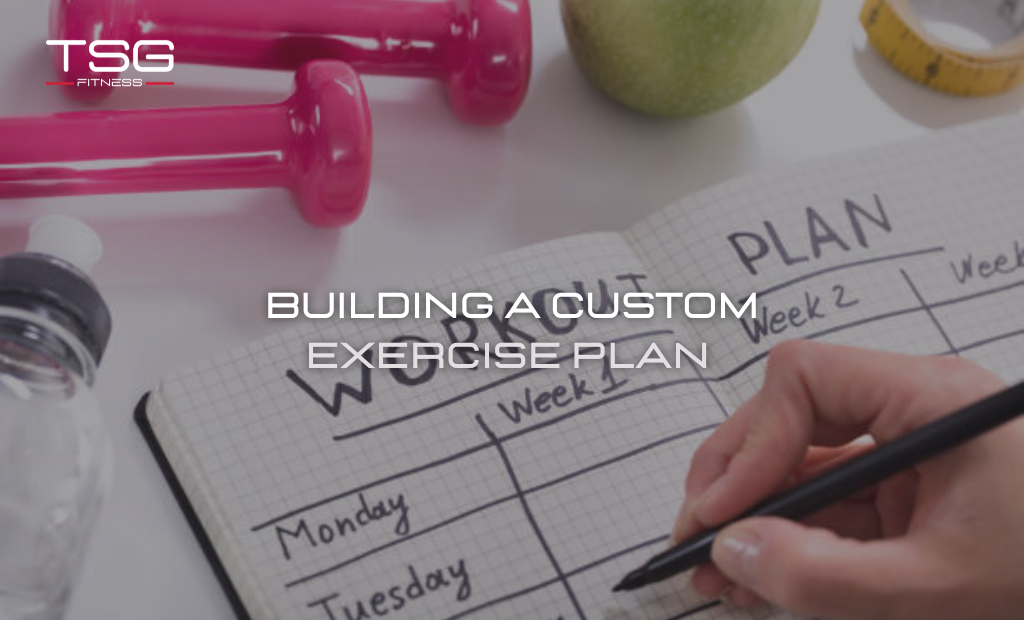
Building a Custom Exercise Plan: 7 Steps from Assessment to Execution
Designing a workout program tailored to your goals, schedule, and environment ensures you stay motivated, progress safely, and enjoy consistent results. Follow these seven steps—from initial assessment to ongoing adjustments—to build a plan that fits your life and transforms your fitness journey.
Step 1: Determine Your Starting Point
Before writing any exercise prescription, gather baseline information:
- Goals: Define what you want—fat loss, muscle gain, improved endurance, or a combination. Use the SMART framework (Specific, Measurable, Achievable, Relevant, Time-bound) to crystallize targets.
- Time Availability: Be realistic about how many days per week and minutes per session you can commit. Even 30 minutes four times weekly can yield significant change if structured correctly.
- Training Environment: Identify where you’ll work out—gym, home, or outdoor space. Equipment access shapes exercise selection and program variation.
Step 2: Conduct a Comprehensive Assessment
A thorough evaluation ensures your program addresses strengths, limitations, and priorities:
- Fitness Level: Measure cardiovascular capacity (e.g., a 3-minute step test), muscular strength (e.g., estimated one-rep max testing), and flexibility (e.g., sit-and-reach).
- Movement Screening: Assess fundamental patterns—squat depth, lunge control, core stability—to spot imbalances or restrictions.
- Lifestyle and Health History: Account for prior injuries, medical conditions, and daily activity levels to mitigate risk and optimize recovery.
Step 3: Structure Your Workout Split
A workout split defines how to distribute training sessions across the week, balancing volume and recovery:
- Full-Body Workouts: Ideal for beginners or limited time—train all major muscle groups each session, 3×/week.
- Upper/Lower Split: Four sessions/week alternating upper and lower body. Enhances focus and volume per region.
- Push/Pull/Legs: Six sessions/week dividing movements into pushing, pulling, and lower-body days. Suitable for advanced trainees.
- Frequency and Recovery: Aim for 48 hours between sessions targeting the same muscle group. Schedule at least one full rest day.
Step 4: Select Appropriate Exercises
Choose movements that align with your goals, environment, and assessment findings:
- Compound Movements: Prioritize multi-joint exercises (squats, deadlifts, presses, rows) for efficient calorie burn and strength gains. These burn up to 30% more calories than isolation work.
- Accessory Movements: Include single-joint exercises to address weaknesses or imbalances (bicep curls, calf raises, lateral raises).
- Progression Options: For each exercise, plan progressions (increased load, volume, or complexity) and regressions (bodyweight variations) to match your current ability.
Step 5: Incorporate Warm-Up and Cool-Down
A structured warm-up primes your body and reduces injury risk:
- Dynamic Mobility: Spend 5–10 minutes on movement drills (leg swings, arm circles, hip openers) targeting joints you’ll use heavily.
- Activation Exercises: Use glute bridges, plank variations, and band pull-aparts to engage stabilizing muscles.
After training, cool down with 5 minutes of light cardio and static stretching for major muscle groups to aid recovery and flexibility.
Step 6: Create a Weekly Schedule
Map out each session with specific exercises, sets, reps, and rest intervals:
Monday – Strength (Squat, Bench Press, Row)
Tuesday – HIIT (6 × 30 s sprints with 1 min rest)
Wednesday – Mobility/Active Recovery (Yoga flow, foam rolling)
Thursday – Strength (Deadlift, Overhead Press, Pull-Up)
Friday – Endurance (30 min steady-state cardio at 70–80% max HR)
Saturday – Skills or Sport-Specific Drills (plyometrics, agility ladder)
Sunday – Rest
Use a gym schedule template or personal-training software to track conditions, loads, and notes.
Step 7: Monitor Progress and Adjust
Ongoing evaluation ensures your plan remains effective:
- Performance Tracking: Record weights, reps, distances, and times each session. Aim for incremental improvements of 2–5% every 1–2 weeks.
- Body Metrics: Periodically reassess strength (estimated 1RM), endurance (beep test level), and body composition (InBody scan or skinfolds) to verify adaptation.
- Program Tweaks: If progress stalls after 4–6 weeks, adjust variables—add sets, increase weight, vary tempo, or modify exercise selection—to renew stimulus.
- Recovery Status: Monitor sleep quality, muscle soreness, and energy levels. Use auto-regulation strategies (reducing volume or intensity) when signs of overreach appear.
By following these seven steps—assessing your starting point, structuring your split, selecting targeted exercises, and continuously monitoring—you’ll craft a custom workout plan that aligns with your goals, schedule, and fitness level. Consistent application and strategic adjustments ensure sustainable progress and help you build the body and performance you desire.



